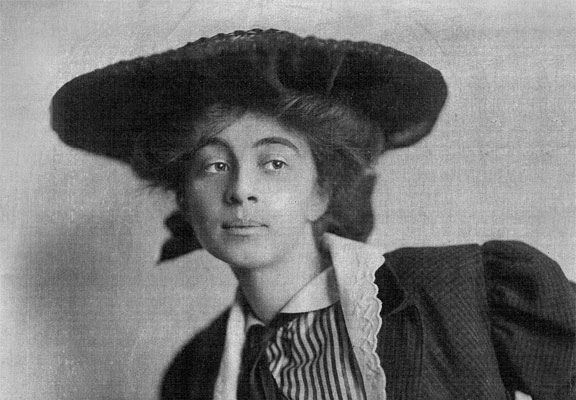

Ruth Hale
Credit: Courtesy of Heywood Hale Broun.
NEW YORK (WOMENSENEWS)–Edward L. Bernays, Heywood Broun and Harold Ross have long been lauded as media innovators, their accomplishments chronicled in hundreds of articles and books. With very few exceptions, though, writers have failed to recognize a fundamental reason for the success of these three remarkable media ventures: each man had an uncredited collaborator.
When Bernays and Doris E. Fleischman wed in 1922, she legally became his equal partner in the firm that bore–and would always bear–his name alone, bringing to the partnership skills and sensitivities that complemented her husband’s and were as crucial as his to their business’s prosperity. Adept at anticipating audience responses, methodical, practical, a superb listener, she proved to be the ideal collaborator in developing campaigns that “sold” clients through actions and appeals based on understanding the needs and desires of the clients’ publics. More than anything else, the couple’s synergistic relationship explains why the firm thrived for 40 years.
Ruth Hale began helping Broun handle the demands of his job immediately after their 1917 marriage when they both were Paris-based reporters covering World War I. In the following years she helped him to form and improve his columns and to write many other articles (some of which she finished for him), by guiding him in saying more and saying it better. At the same time, this woman who had always been a rebel and activist prodded and inspired him to be much braver at the typewriter, fostering his transformation into a crusader and defender of the underdog. “Ruth was conscience and Heywood was the voice of conscience,” their son wrote.
Birth of the New Yorker
Jane Grant did so much to help Ross research publication options, envision the New Yorker, obtain financial backing for it (several times), form its staff and keep it operating during its perilous first year that two decades later he admitted, “There would be no New Yorker today if it were not for her.” Nor was that the end of her involvement. For during World War II she led a fight to reform the magazine’s business office, then spearheaded the creation of a small-format edition for overseas troops that exposed hundreds of thousands of servicemen to the magazine and helped it nearly double its circulation after the war.
“Anonymous in Their Own Names” consists of separate but intertwined biographies of these three women whose work was invisible in their own time and has remained invisible to countless authors who have detailed their husbands’ accomplishments but could not “see” the crucial contributions of their wives.
Their invisibility is ironic given that they were feminists who kept their birth names when they married as a sign of their equality with their husbands and repeatedly battled the government and societal norms to continue using their names.
Still, they carried out their most important work anonymously–masked by their husbands’ fame, which they helped create.
They also created an organization to help other women keep their names, inspired in their efforts by Lucy Stone, the 19th century women’s rights activist who was thought to have been the first American woman to keep her surname when she married. Her declaration, “My name is the symbol of my own identify and must not be lost,” became the motto of the Lucy Stone League, founded in 1921 by Hale and Grant and revived in 1950 by Grant and Fleischman (also a 1920s member). The league was one of a small number of U.S. feminist organizations during the 1920s and the 1950s, making it important beyond its advocacy of this one cause.
Excerpted from the new book, “Anonymous in Their Own Names: Doris E. Fleischman, Ruth Hale, and Jane Grant” by Susan Henry, published by Vanderbilt University Press, 2012. Reprinted with permission. For more information: www.VanderbiltUniversityPress.com.
Susan Henry is professor emeritus of journalism at California State University, Northridge, and a former editor of Journalism History.
Would you like to Comment but not sure how? Visit our help page at https://womensenews.org/help-making-comments-womens-enews-stories.
Would you like to Send Along a Link of This Story?
https://womensenews.org/story/our-history/120728/three-anonymous-spouses-shaped-20th-century-media
For more information:
Buy the book, “Anonymous in Their Own Names: Doris E. Fleischman, Ruth Hale, and Jane Grant”:
http://www.powells.com/partner/34289/biblio/9780826518460?p_ti


